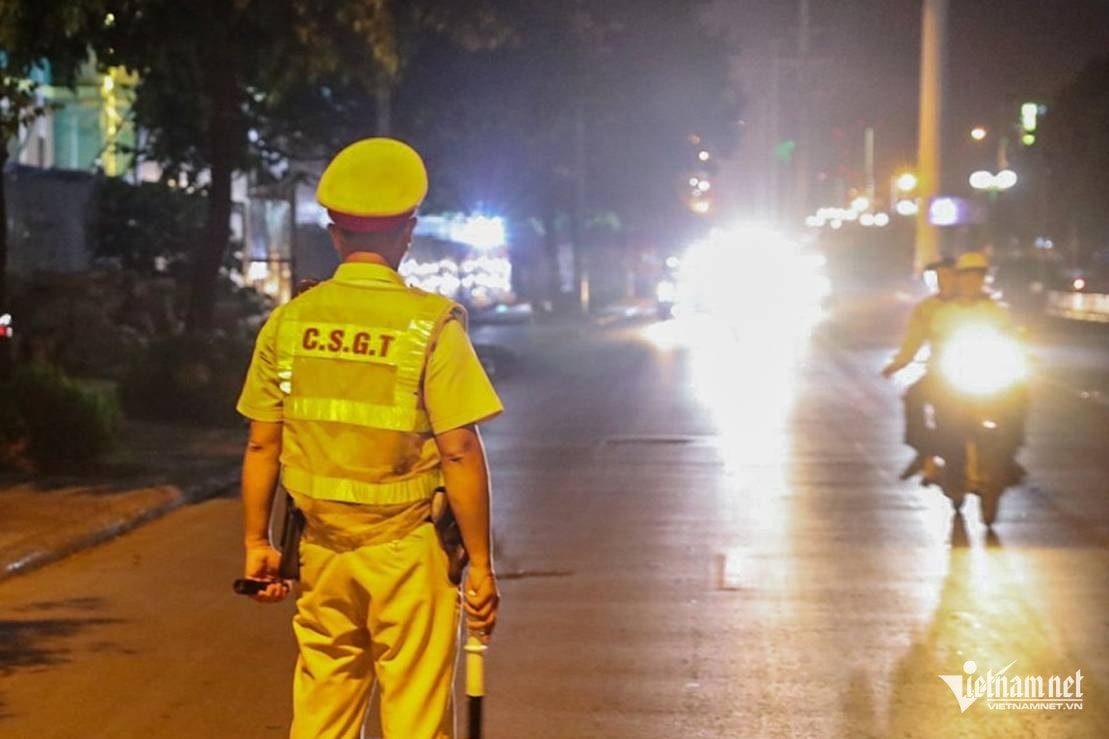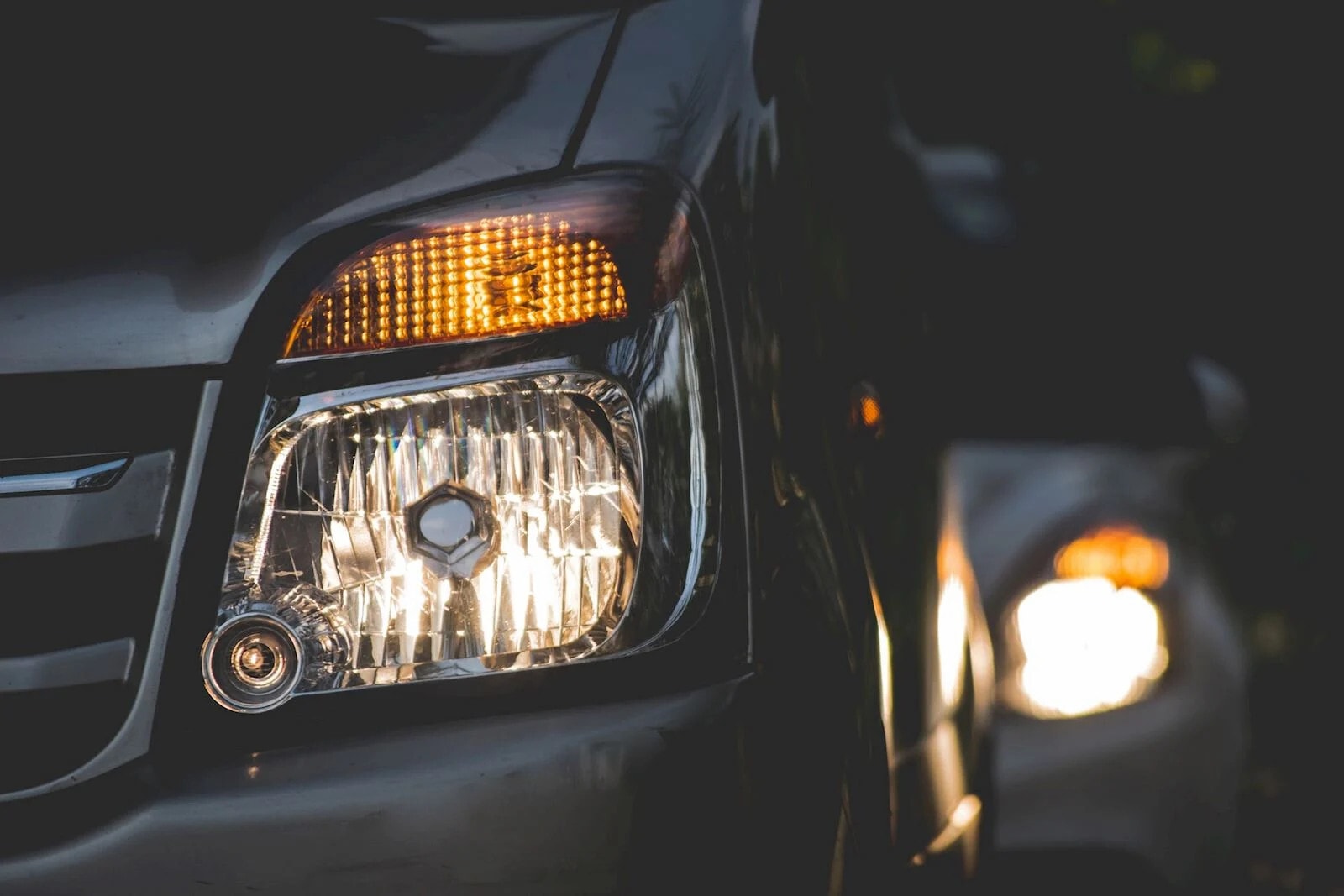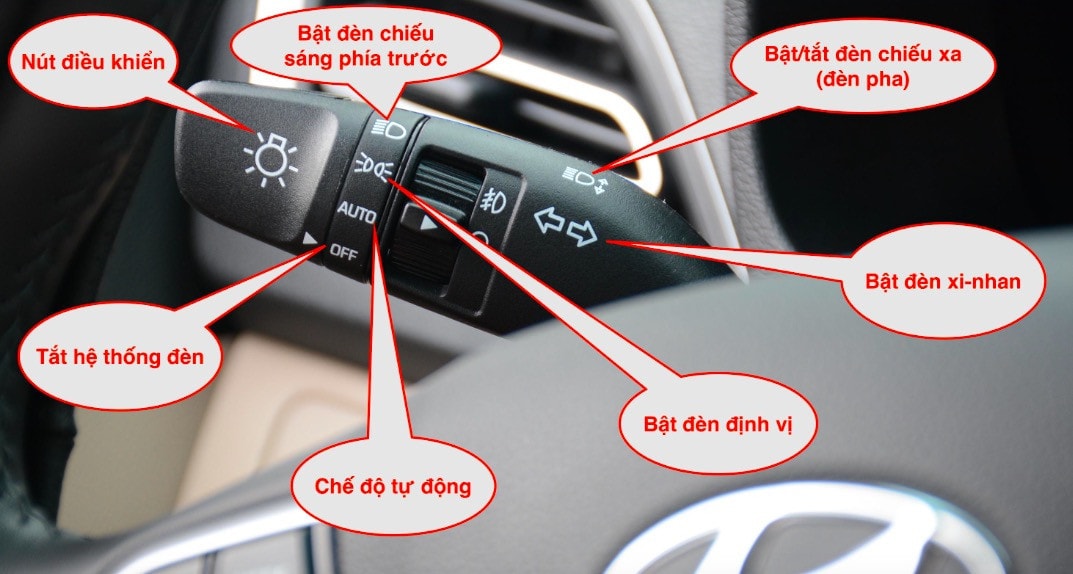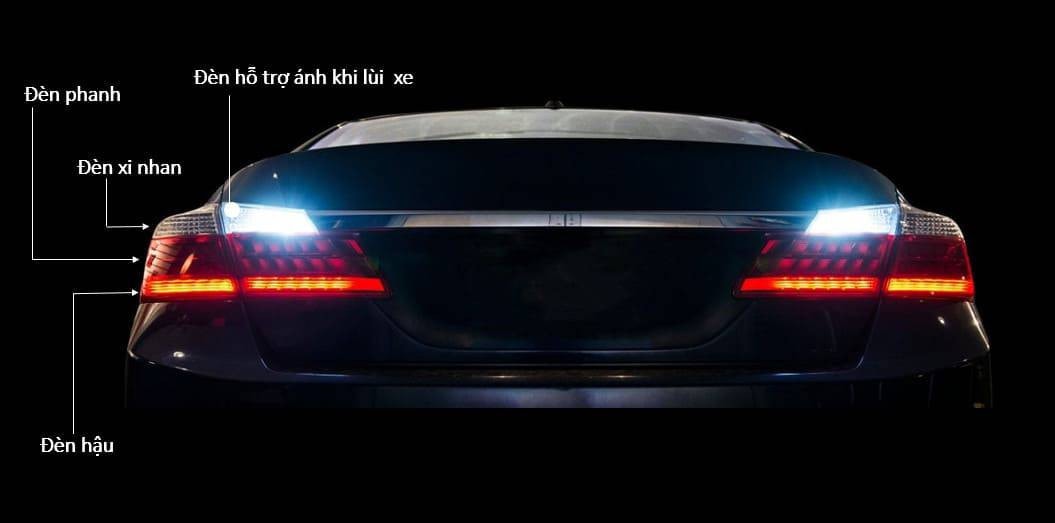Headlights, fog lights, turn signals, brake lights, license plate lights... each type of light on a car has its own function. If not used properly, it will be unsafe and you may be fined by the traffic police.

The lighting system on a car is an indispensable part of every car. Although different in design, safety features,... but almost every car must ensure that it has all the basic lights with different functions.
Knowing and using the lights skillfully not only helps you drive more safely but also complies with road traffic regulations, thereby avoiding being "questioned" by authorities such as traffic police. In addition, when one of the car's lights is broken or not working properly, the car will be refused registration.
Here are eight types of lights or signals found on most cars today:
1. Low beam light (cos)
Headlights (including low beam and high beam) are the most important type of light on a car. Of these, low beam (cos) is used more often, helping drivers see ahead in low light conditions without blinding oncoming traffic.
Article 20 of the 2008 Road Traffic Law and Decree 100/2019/ND-CP stipulates on turning on vehicle lights as follows: Drivers must turn on their headlights from 7:00 p.m. the previous day to 5:00 a.m. the next day, when fog or bad weather limits visibility; turn on low beams when driving in road tunnels,...
2. Far beam
Depending on the type of vehicle, the high beam (far) can be integrated in the same position as the low beam in the headlight cluster or arranged as a separate reflector. This type of light helps the driver see further, suitable when driving outside residential areas, highways, one-way roads, and steep mountain passes without oncoming vehicles.
According to Article 20 of the 2008 Road Traffic Law and Decree 100/2019/ND-CP: High beams must not be turned on in urban areas or densely populated areas, except for priority vehicles on duty as prescribed; high beams must not be turned on when avoiding oncoming vehicles.
For the violation of "not turning on headlights" or "using high beams in urban areas, densely populated areas and driving in road tunnels", car drivers can be fined from 800,000 to 1 million VND according to Clause 3, Article 5 of Decree 100/2019/ND-CP.

3. Fog lights
Fog lights are also known as underbody lights, and belong to the group of vehicle lighting. The fog lights are installed in the front bumper, lower than the two main lights of the vehicle. The fog lights are usually controlled separately from the main lights so that they can be used independently when needed.
Normally, fog lights have yellow light, which helps to "break" fog or drizzle better than the white light of headlights. In addition, being placed low helps the fog lights to illuminate the road surface and markings more clearly.
4. Turn signal lights
Turn signals are a group of car signal lights, mounted symmetrically at the front and rear of the car. On some car models, this type of light is also mounted on the side and on the rearview mirror, helping other road users easily recognize the car changing direction.
The emergency light is a special function of the turn signal. When the emergency button is pressed, both turn signals flash continuously instead of just one side as usual.

5. Tail lights
Tail lights help vehicles to be better identified at night. The tail lights are usually located on both sides of the rear of the car and are red in color, and are connected to the same control switch as the headlights. Therefore, when you turn on the front headlights, the rear tail lights also light up.
If the car's taillights are not on for some reason, other drivers will not be able to recognize the position and size of the car, making it unsafe to measure distance or overtake on the road.
6. Brake light
Car brake lights are usually located in the rear light cluster on both sides and on some cars there is an additional brake light in the middle. The brake light is usually red but brighter than the rear light. This type of light has the function of signaling to the vehicles behind that the vehicle in front is slowing down or stopping, so that the vehicle behind can proactively adjust its speed to avoid collision.
True to its name, the brake lights will light up when the driver presses the accelerator. On some new electric vehicles, it is possible to set the mode so that the brake lights will light up when you release the accelerator and slow down.

7. Reverse lights
Reverse lights are also often located in the rear light cluster, close to the turn signals but are white in color, and are activated when the car is in reverse gear (R). The function of this type of light is to support the light when reversing, and at the same time signal to the vehicles behind that the car in front is reversing.
8. License plate light
Like the taillights, the license plate light is integrated with the headlights. The function of this type of light is to illuminate the rear license plate to identify the vehicle in low light conditions.
Clause 2, Article 16 of Decree 100/2019/ND-CP stipulates a fine of 300-400 thousand VND for one of the following violations: Driving a vehicle without adequate headlights, license plate lights, brake lights, signal lights, windshield wipers, rearview mirrors, etc. or having such equipment but it is not effective or does not meet design standards.
TH (according to Vietnamnet)